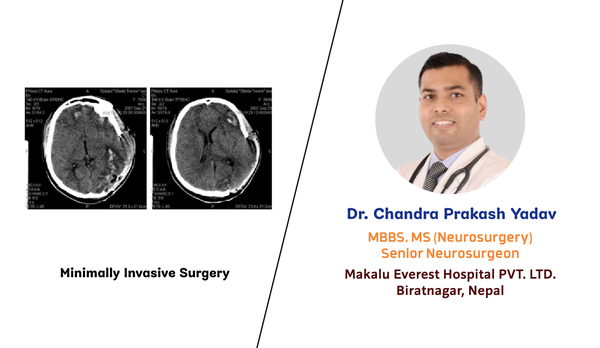Autism Spectrum Disorder (ASD)
The global prevalence of autism is 17 per 10,000, with a male-to-female ratio of 4:1 . The Autism Care Society of Nepal states that around 2.5 to 3.5 lakh persons are living with autism in Nepal, and among them, 60,000 to 90,000 are severely affected. It is a genetic disorder that is associated with increasing parental age and an increased risk of occurrence in that parent group.
Symptoms
Symptoms start to develop in early infancy; some develop well till 9–12 months, and others till 15–18 months, and then the symptoms start. First and foremost, there is a deficit in social communication and social interaction.
A child with autism has impaired sharing of interest and emotion, along with a lack of imitation of other behaviors.
They can not look or focus on objects. There is a delay in pro-declarative pointing (pointing of objects for the purpose of getting that object). Children with this disorder do not use social gestures like NAMASTE and BYE-BYE appropriately.
There is no normal back-and-forth conversation, along with poor integration of verbal and non-verbal communication. There is an abnormality in eye contact and gaze avoidance (when a person looks into their eyes, they look the other way). Children often have reduced expressions of emotion like fear, sadness, etc.
They also do not point at the object with an index finger, and speech is usually delayed. They find it difficult to make friends and also are not able to do imaginative play (feeding a doll, making her sleep, copying her mother, pretending to talk on the phone).
Children also find it difficult to adjust their behavior to suit the social context. Children with autism also have restricted, repeated patterns of behavior, interests, and activities. Repeated motor movement, speech, and use of objects are seen in children suffering from this disorder.
Insistence on sameness (wearing a particular cloth with the same color and pattern). They also have highly restricted, fixated interests that are abnormal in intensity or focus. (They can spend the whole day playing with a piece of toy, paper, pen/collect coin or stones).
They also have hyper- and hypo-active sensory impulses (not showing a response to a painful stimulus like burns or showing excess, like crying after minor pain).
Hyperactivity, temper tantrums, self-injurious behavior, aggression and profound intellectual disability are present in some. Also 25% of children with autism suffer from epilepsy.
Some have sleep problems, and some older children have psychiatric illnesses like depression and anxiety.
Treatment
The main aim is to start the treatment as soon as a diagnosis is made. Early diagnosis and early intervention in autism (ASD) give the best outcome.
Here are some common approaches to autism treatment:
// Behavioral Therapies:
Applied Behavior Analysis (ABA):
ABA is a widely used therapeutic approach that focuses on reinforcing positive behaviors and minimizing undesirable ones. It is often used to teach new skills and improve social behaviors.
Cognitive Behavioral Therapy (CBT):
CBT helps individuals with autism manage anxiety, improve social skills, and cope with challenging situations by identifying and changing negative thought patterns.
Social Skills Training:
This type of therapy focuses on improving communication and social interaction skills, helping individuals navigate social situations more effectively.
// Educational Interventions:
Special Education Services:
Tailored educational programs and classroom accommodations can help individuals with autism thrive academically. This may include individualized education plans (IEPs) or 504 plans.
Speech and Language Therapy:
Many individuals with autism experience challenges in communication. Speech and language therapy can help improve communication skills, including spoken language and non-verbal communication.
// Medication:
Medications may be prescribed to manage specific symptoms or co-occurring conditions, such as anxiety, depression, or attention-deficit/hyperactivity disorder (ADHD). It’s important to consult with a healthcare professional to discuss the potential benefits and risks of medication.
// Occupational Therapy:
Occupational therapists can help individuals with autism develop skills for daily living, improve motor skills, and address sensory sensitivities.
// Sensory Integration Therapy:
This therapy aims to help individuals manage sensory sensitivities or sensory-seeking behaviors by exposing them to various sensory experiences in a controlled and gradual manner.
// Parent and Family Involvement:
Involving parents and families in the therapeutic process is essential. Training and support can help caregivers understand and implement strategies to support their child’s development.
// Alternative and Complementary Therapies:
Some individuals with autism may benefit from alternative therapies such as music therapy, art therapy, or animal-assisted therapy.
While these approaches may offer benefits, it’s important to ensure they are evidence-based and complement traditional interventions.
The American Academy of Pediatrics recommends routine use of ASD-specific screening tools at 18 and 24 months of age. The modified checklist for autism (MCHAT) is the most widely used screening tool.
So far, there is no biological test for ASD, and the diagnosis is based on a group of clinical features.

Early intervention Therapy is the mainstay of treatment, in which applied behavior analysis (ABA) is most evidence-based and practiced. Therapy should address the issues of communication, socialization and adaptive behavior, and it should be individualized and done on a daily basis.
Parental training and involvement are very important. Currently, there is no drug to cure the care deficit of social interaction and communication.
Drugs are used to manage the symptoms associated with maladaptive behaviors, repetitive movements, and sleep problems. With early intervention therapy, there is a significant improvement in socialization and communication skills.
10% of children can outgrow their condition. A child with good intelligence, early language development, early diagnosis, early intensive behavior therapy, and management with applied behavior analysis has good outcomes. Socio-economic factors also play an important role in good outcomes.
The life expectancy of ASD children is 3 years less than that of the general population.
Conclusion
Autism is a complex neuro-behavioral disorder that includes social impairment in social interaction, language development, and commutation skills.
Along with this, children have rigid and repetitive behavior. This disorder covers a large spectrum of symptoms and different levels of impairment, that may limit a child’s ability to live a normal life.
Early diagnosis and early intervention may lead a child to live a better quality of life. So, increasing awareness about the condition is very important for the general population to outgrow the taboo and false beliefs that exist in society.
Before starting any treatment, it’s crucial to consult with healthcare professionals, including pediatricians, psychologists, and developmental specialists, to create a personalized treatment plan tailored to the individual’s unique needs and challenges. Additionally, staying informed about the latest research and evidence-based practices is essential in providing the most effective support for individuals with autism.




